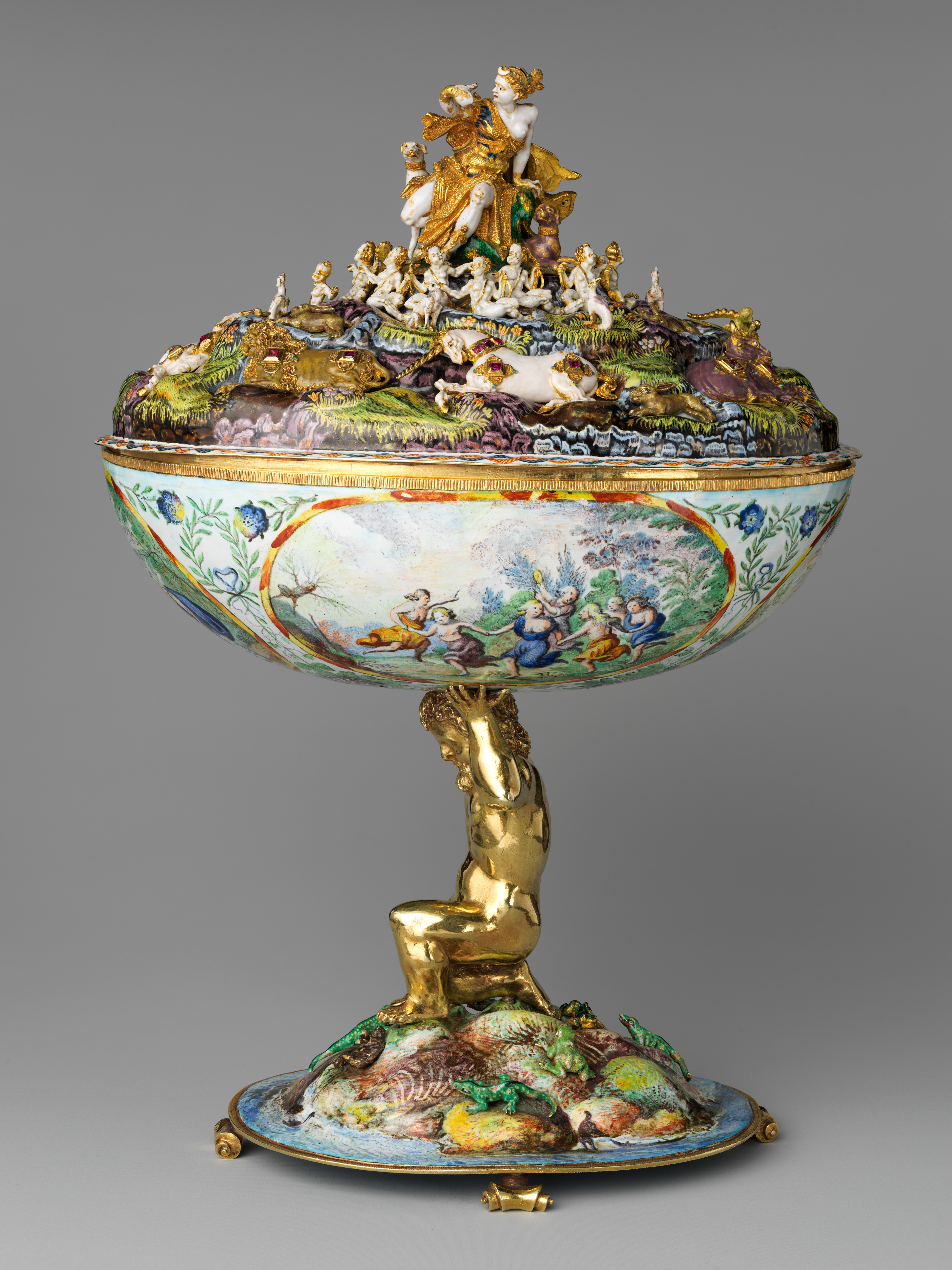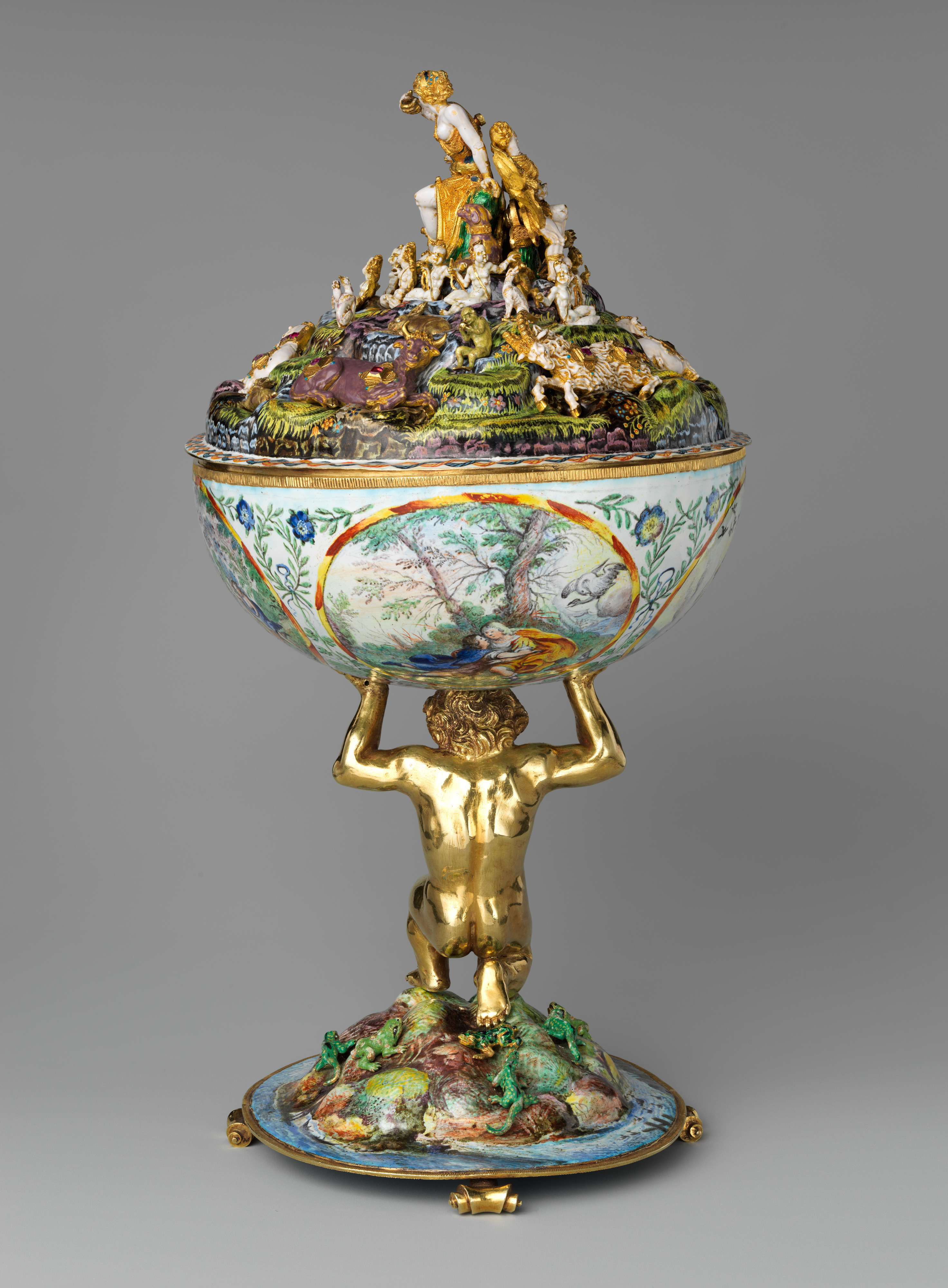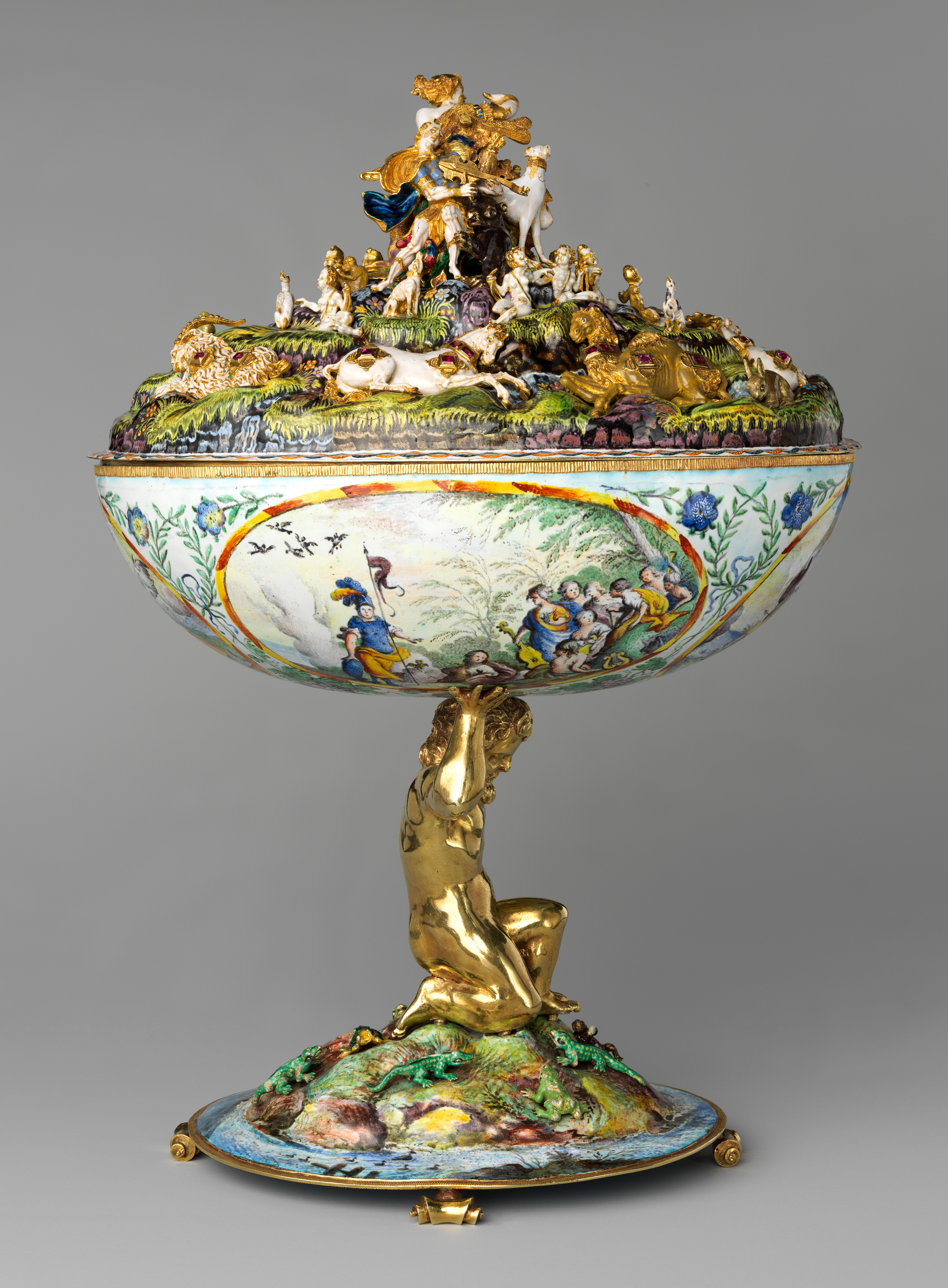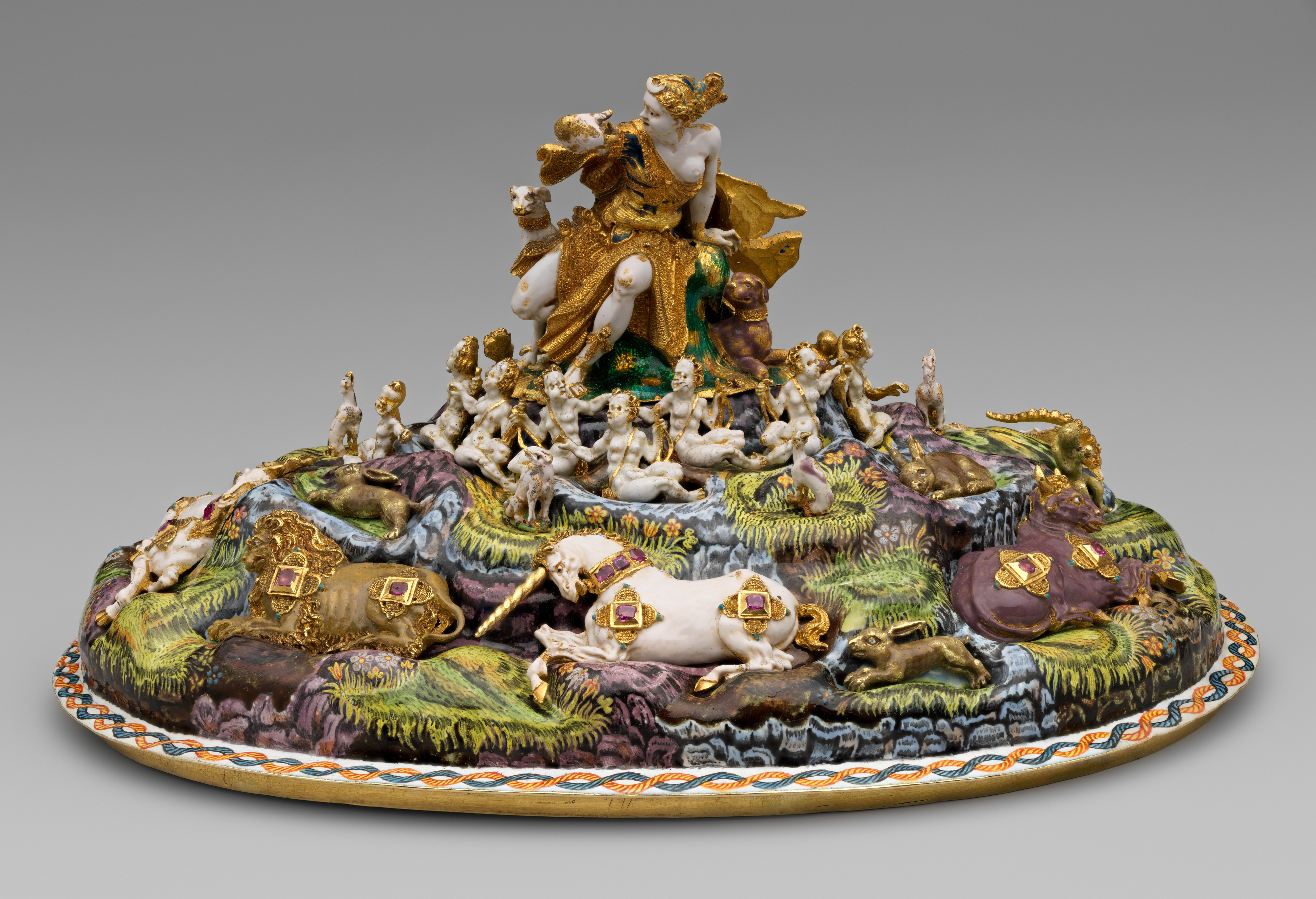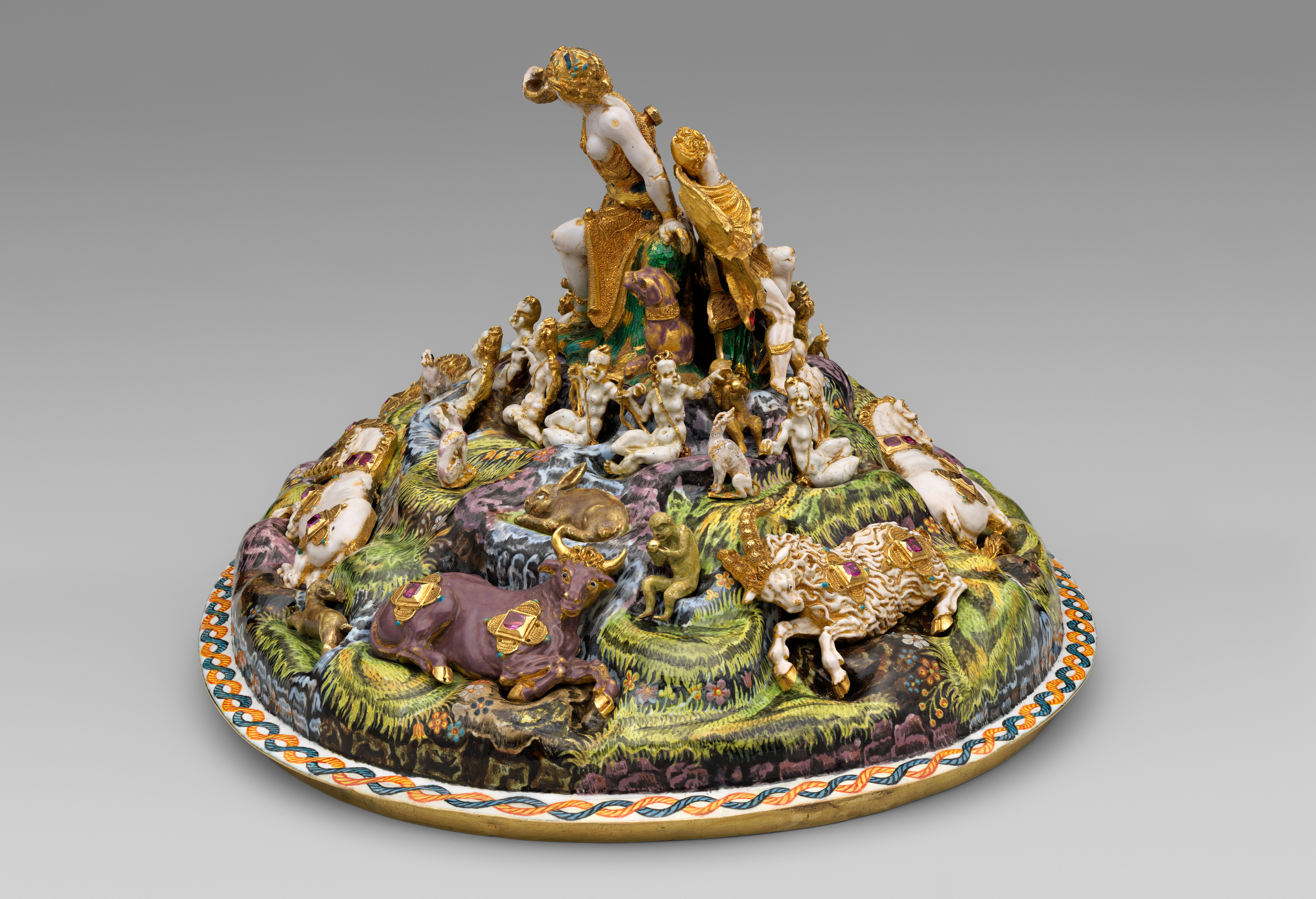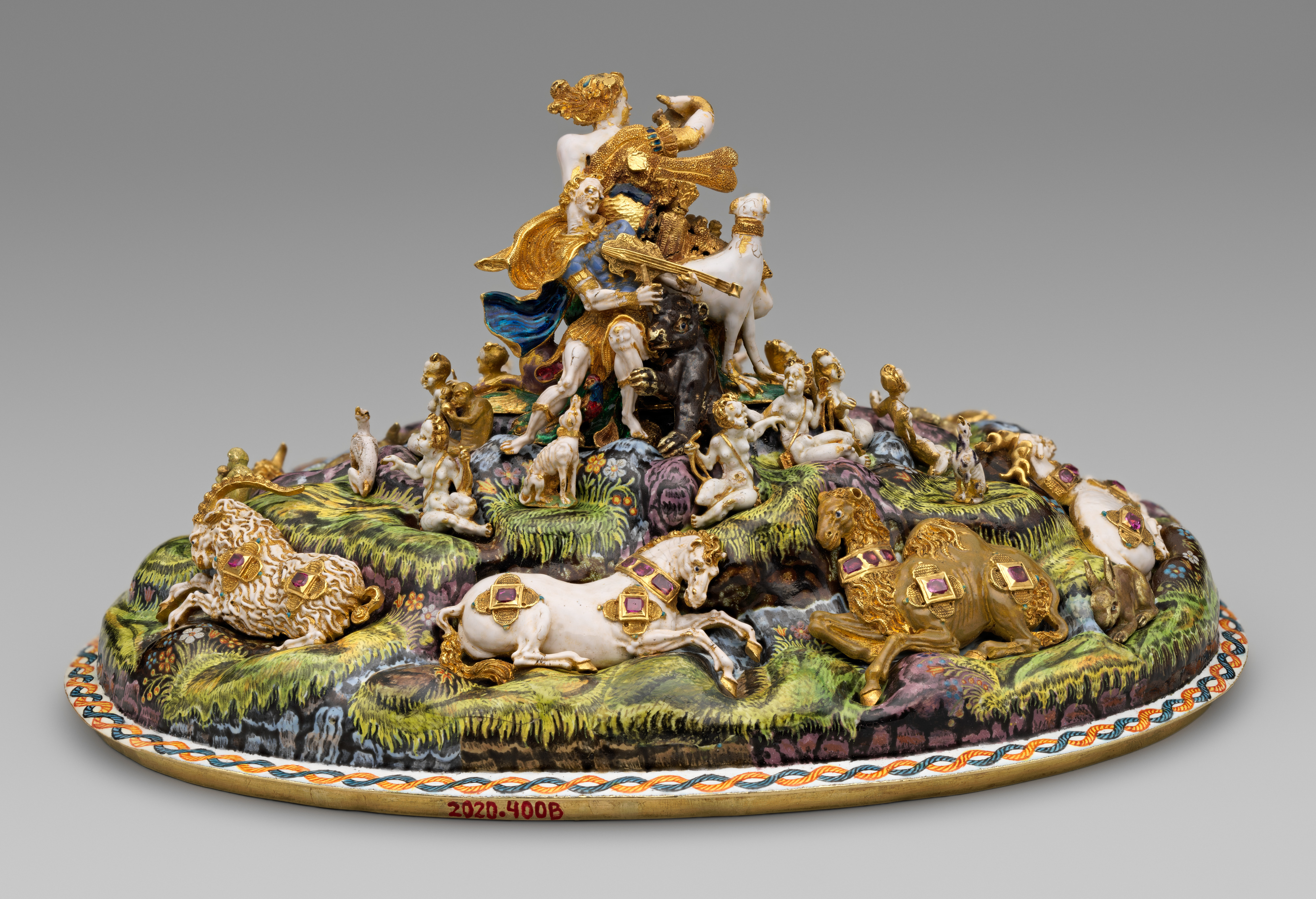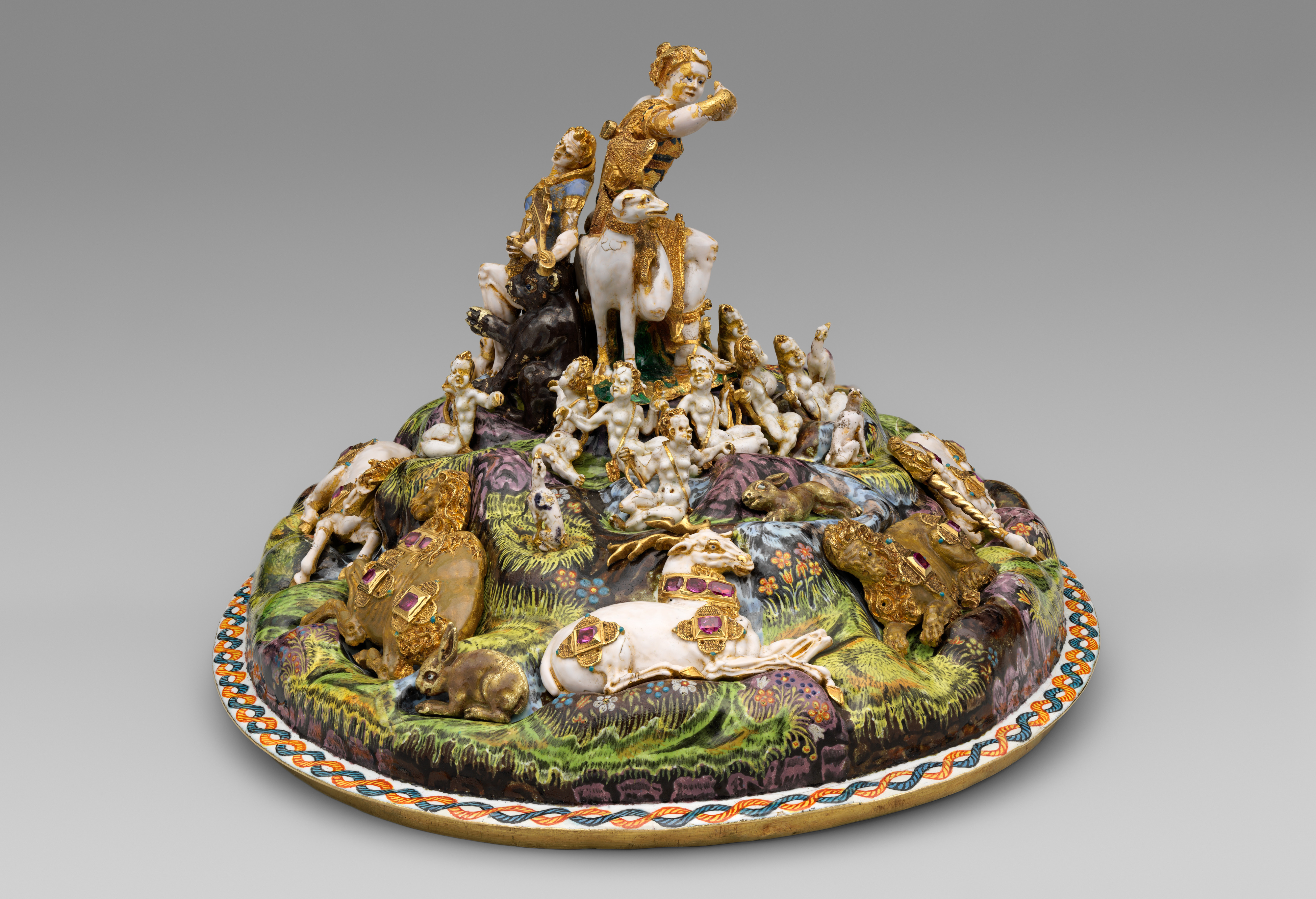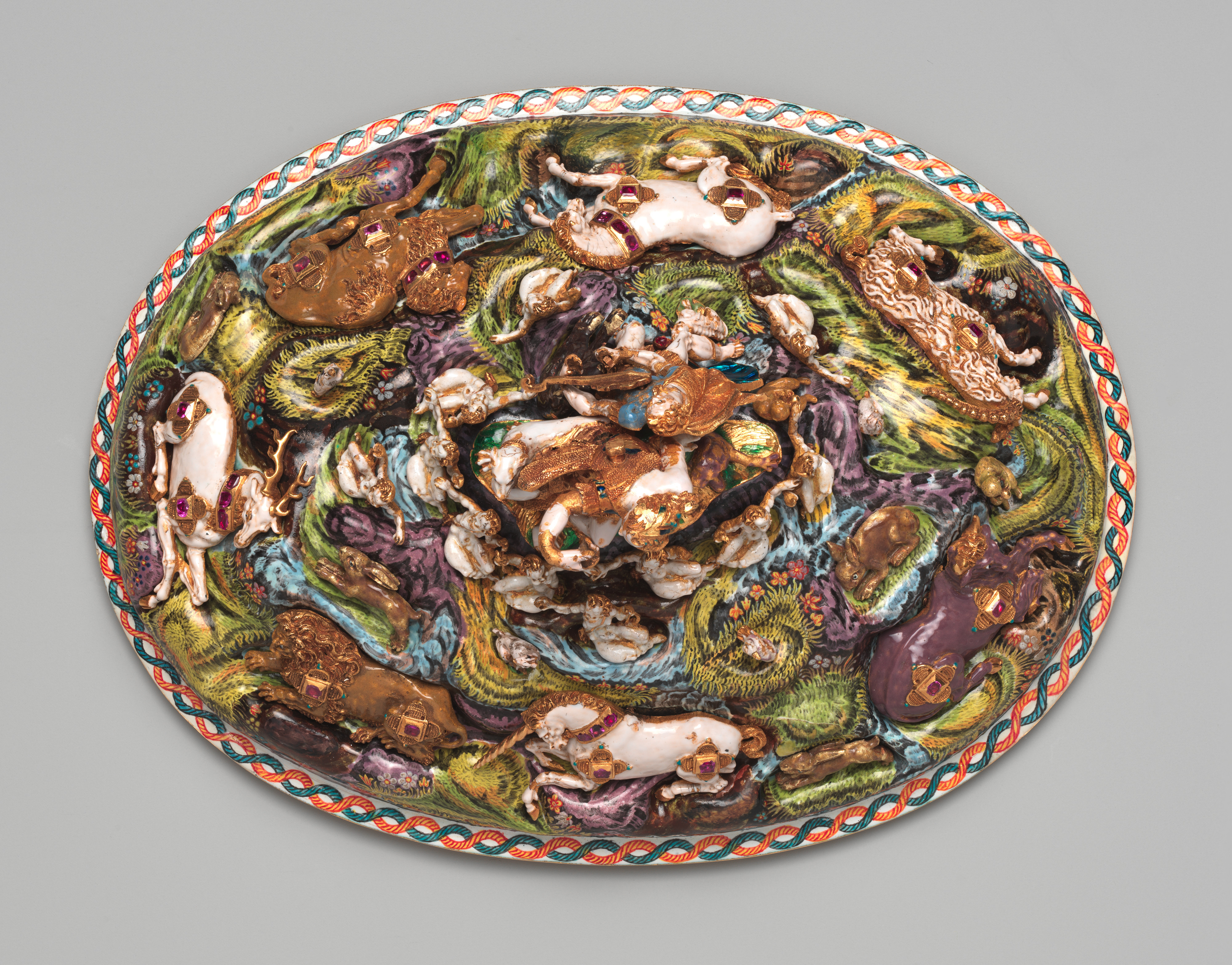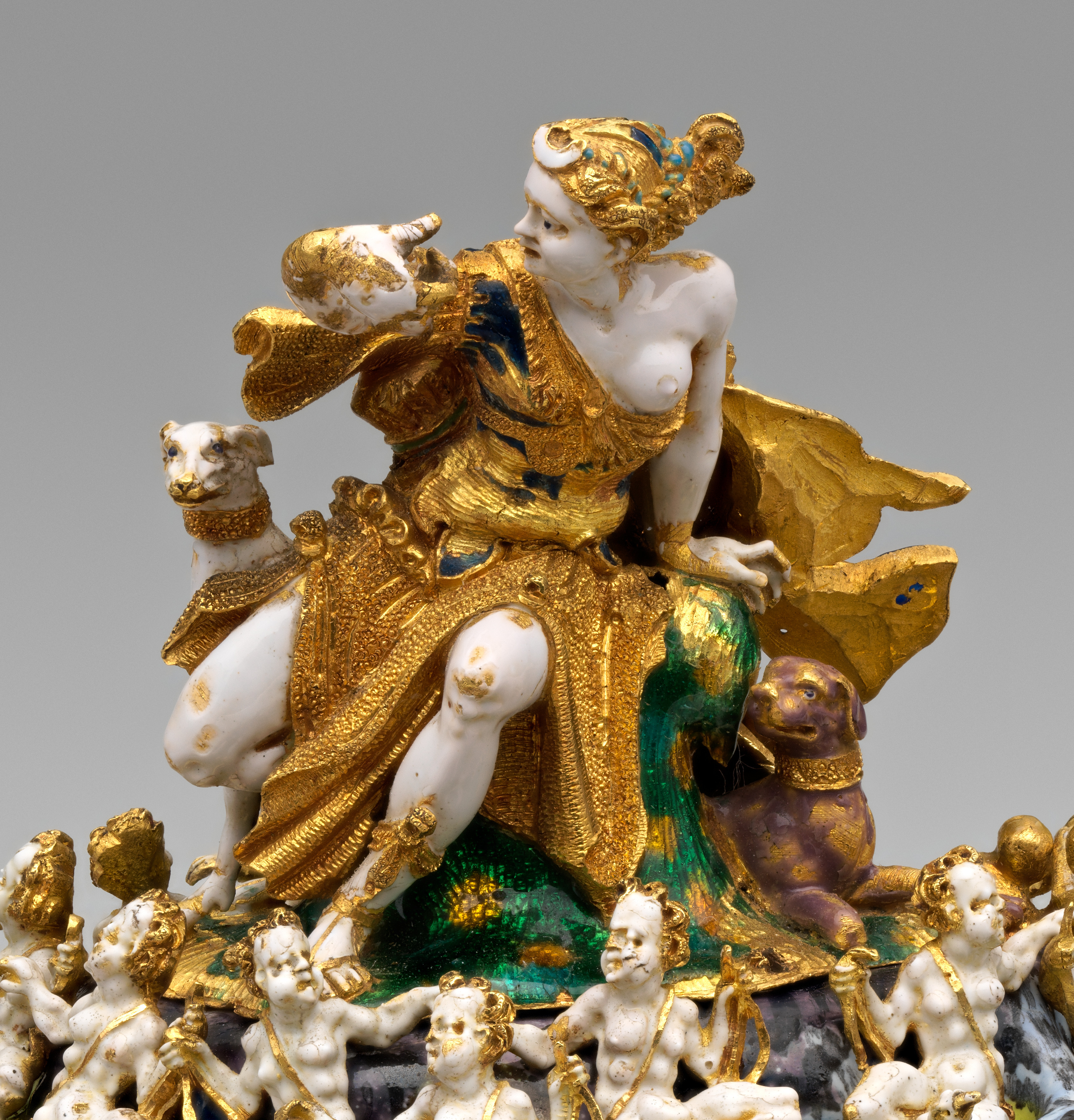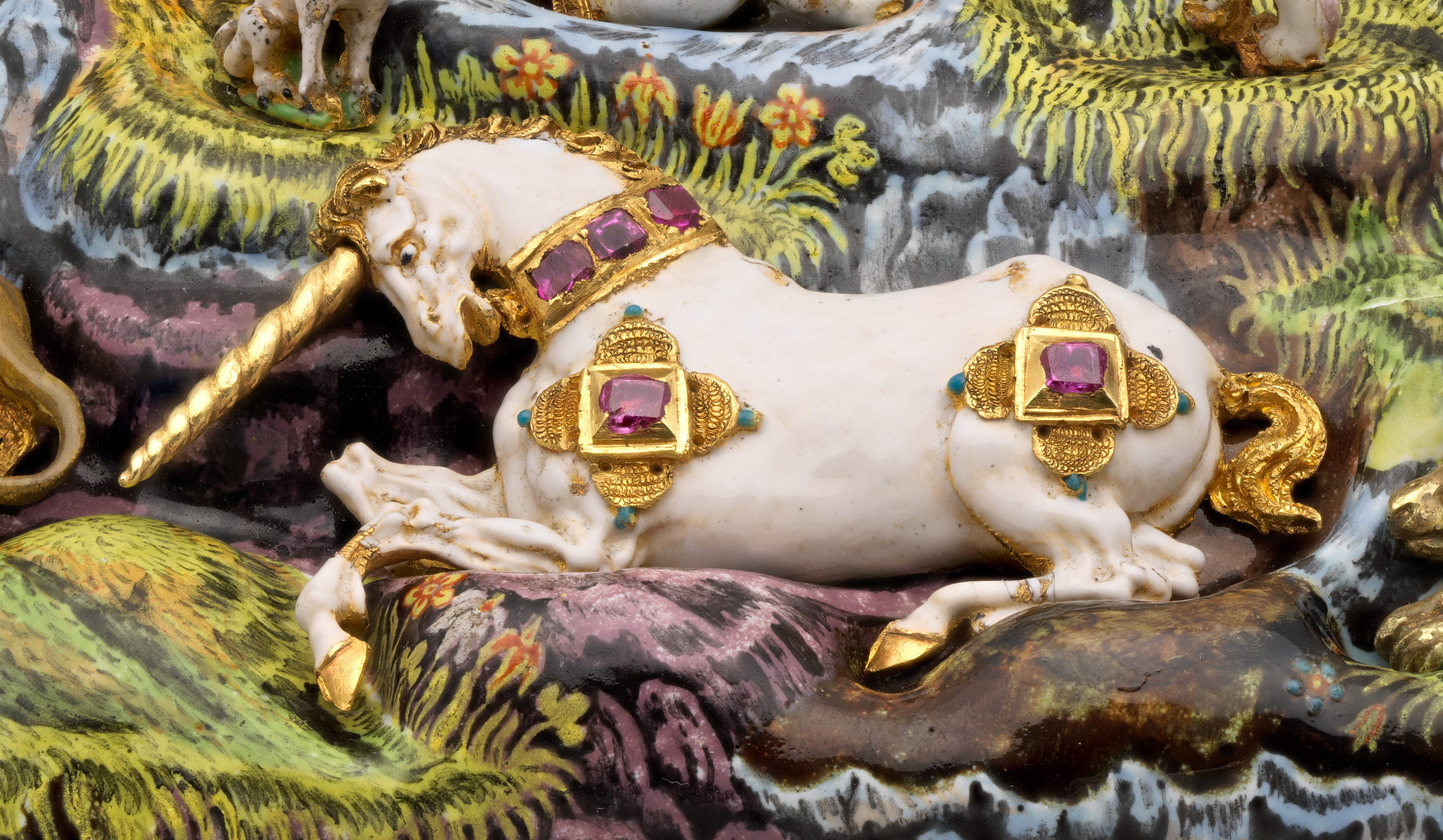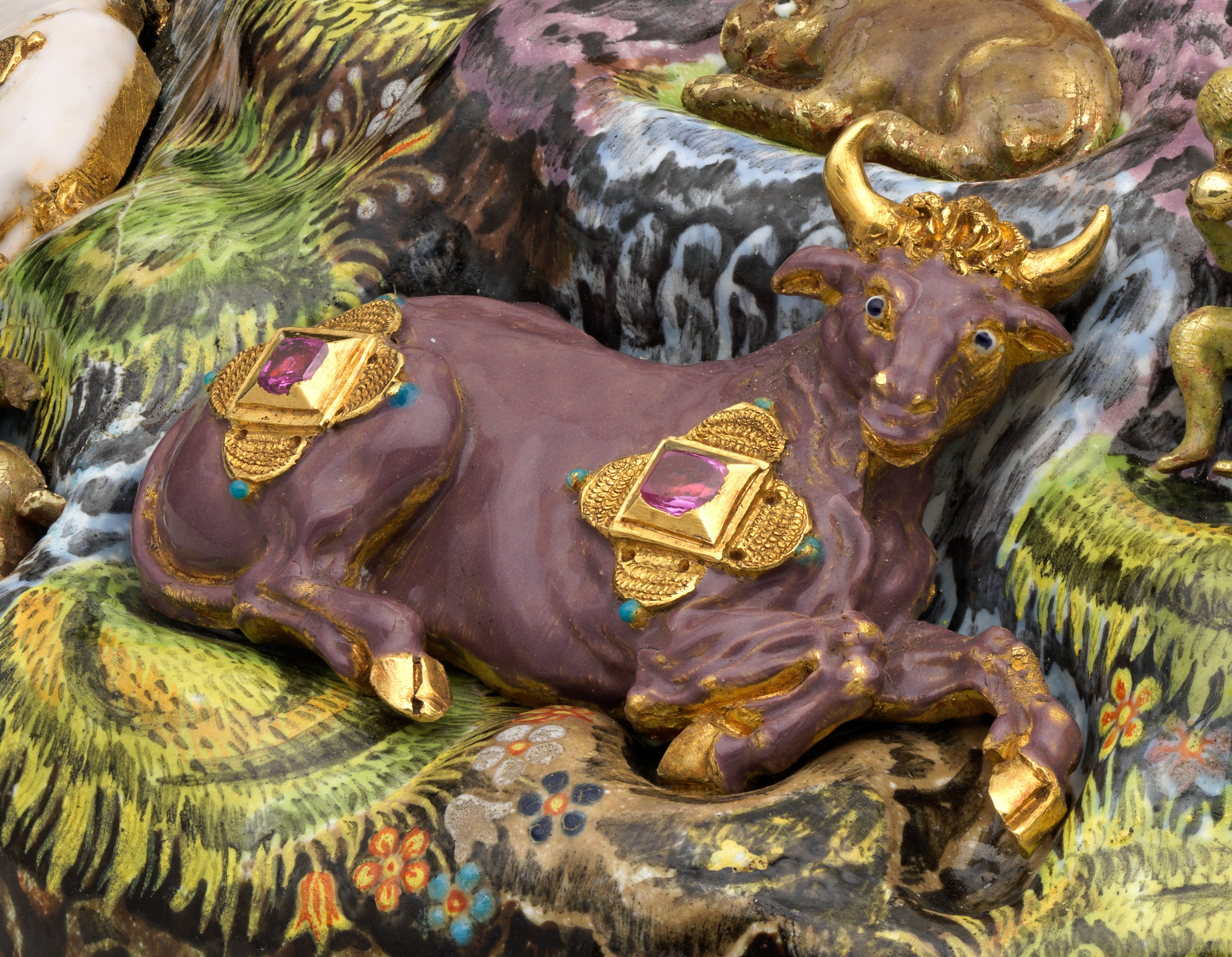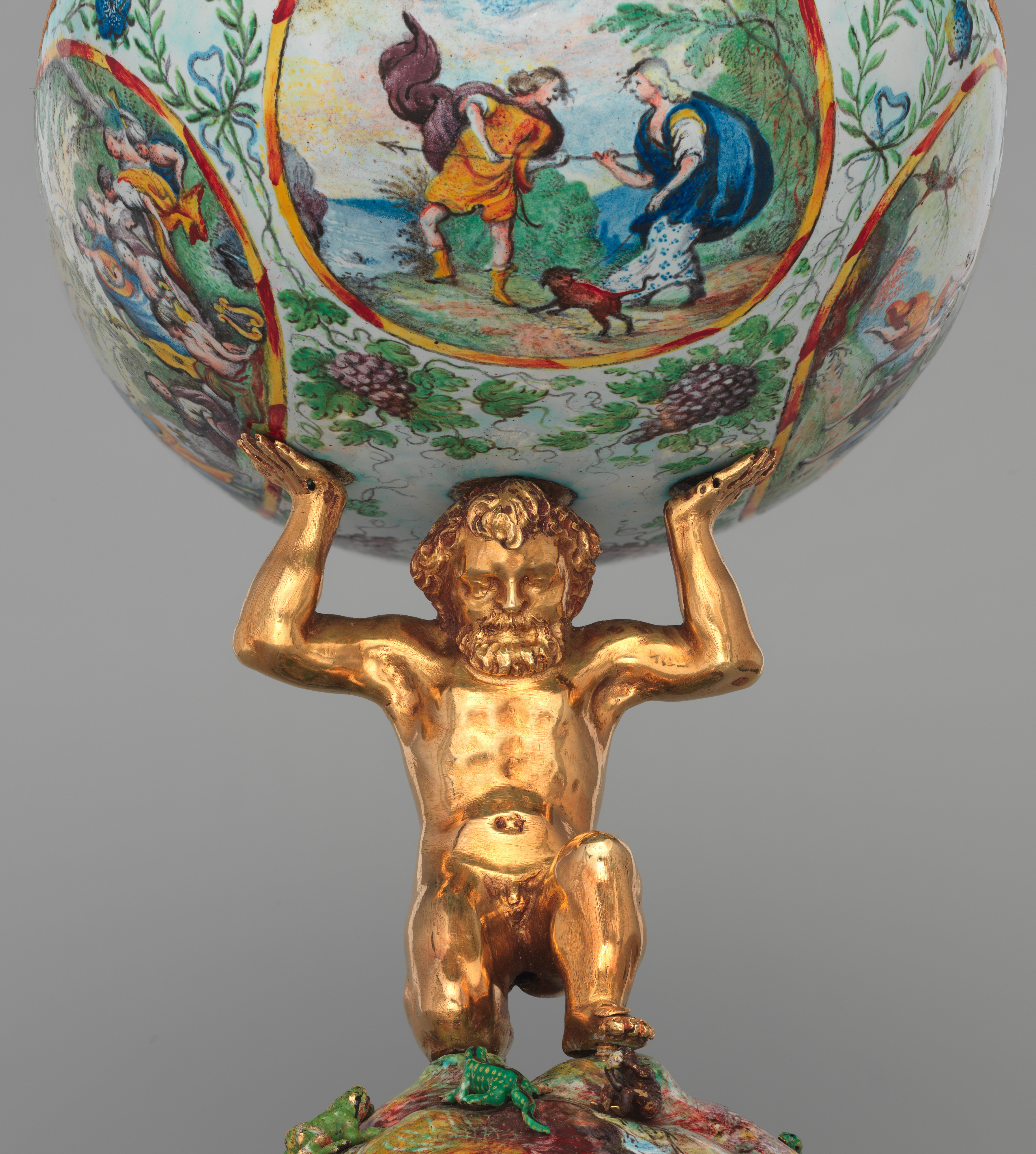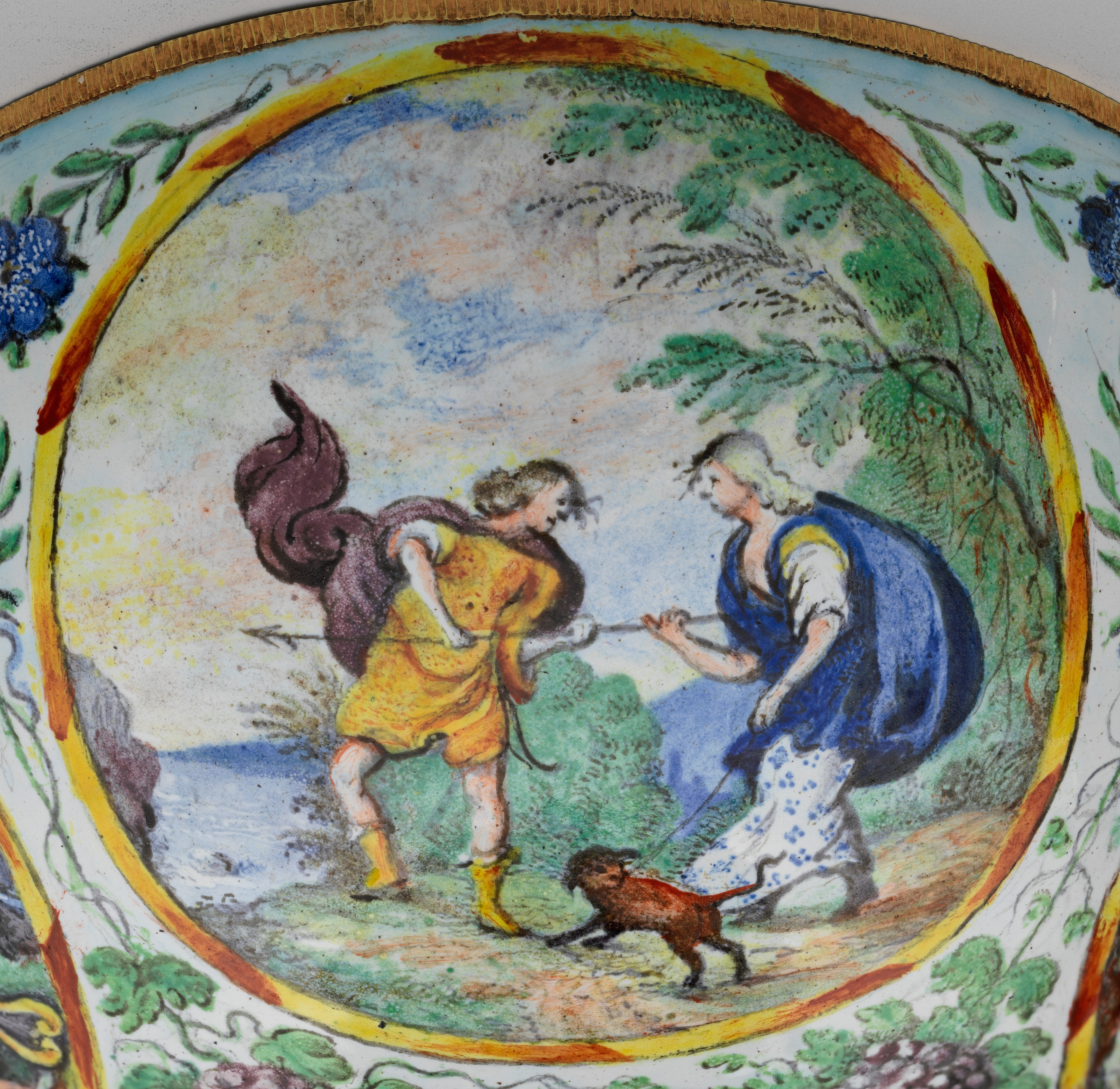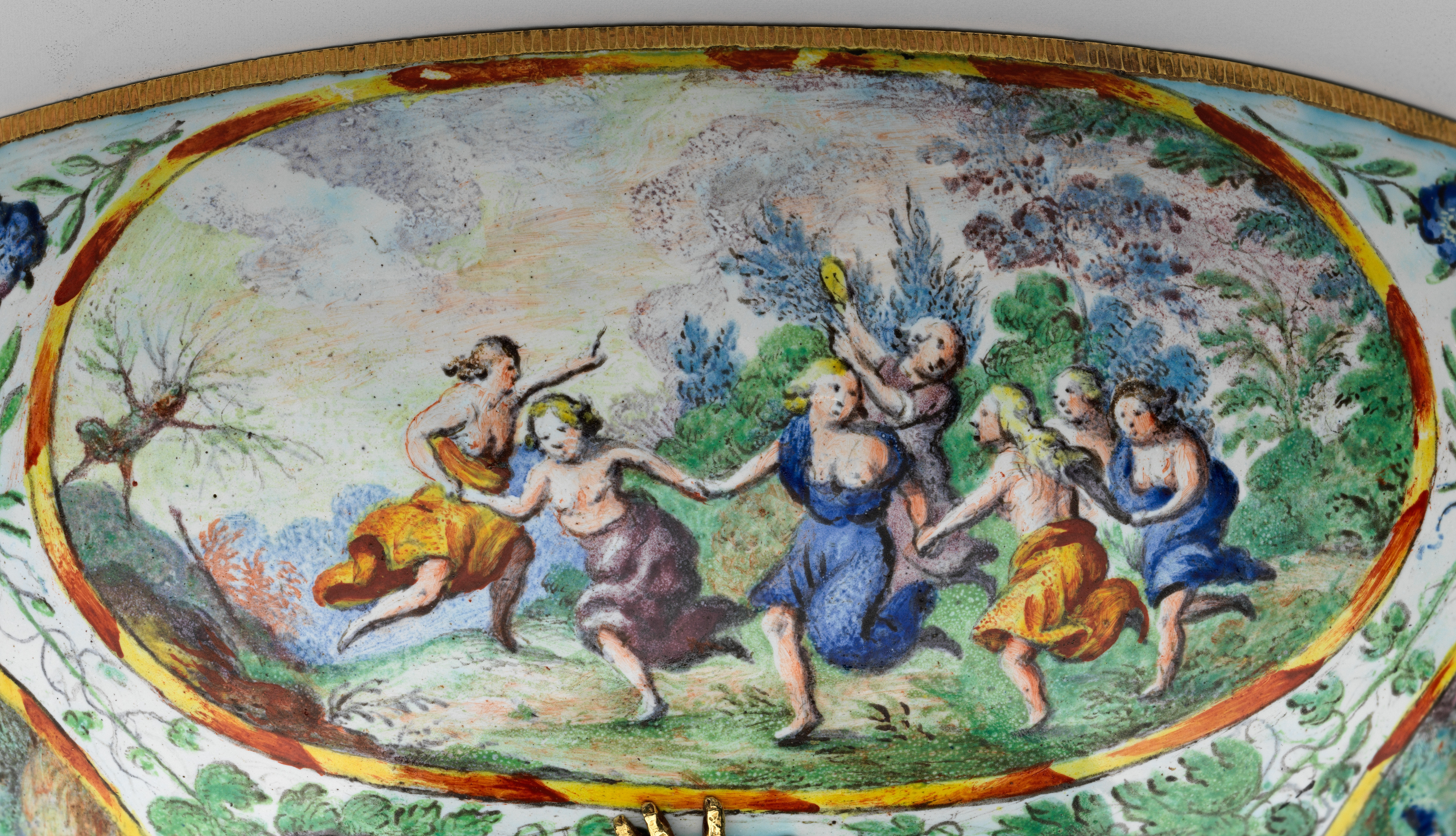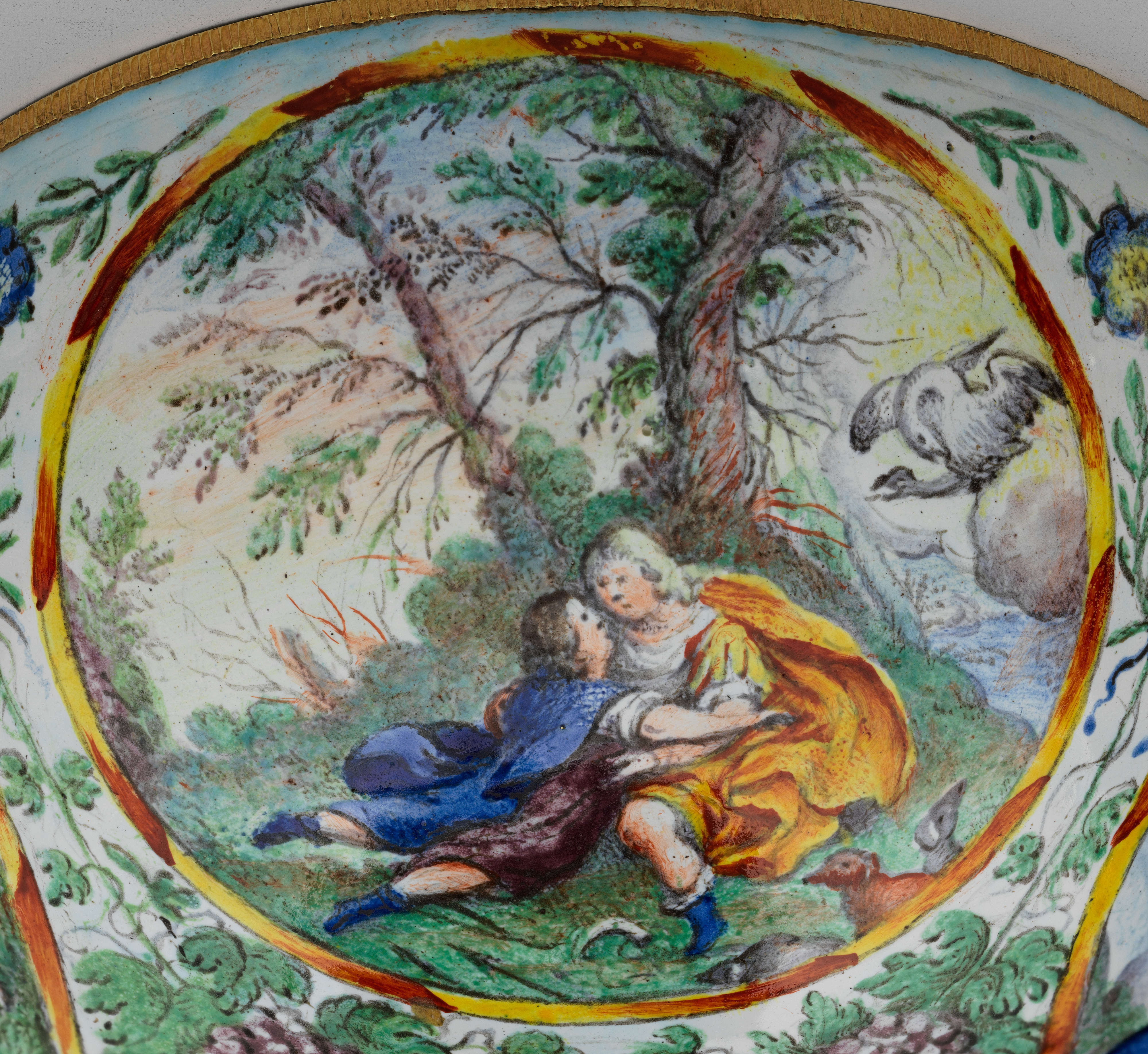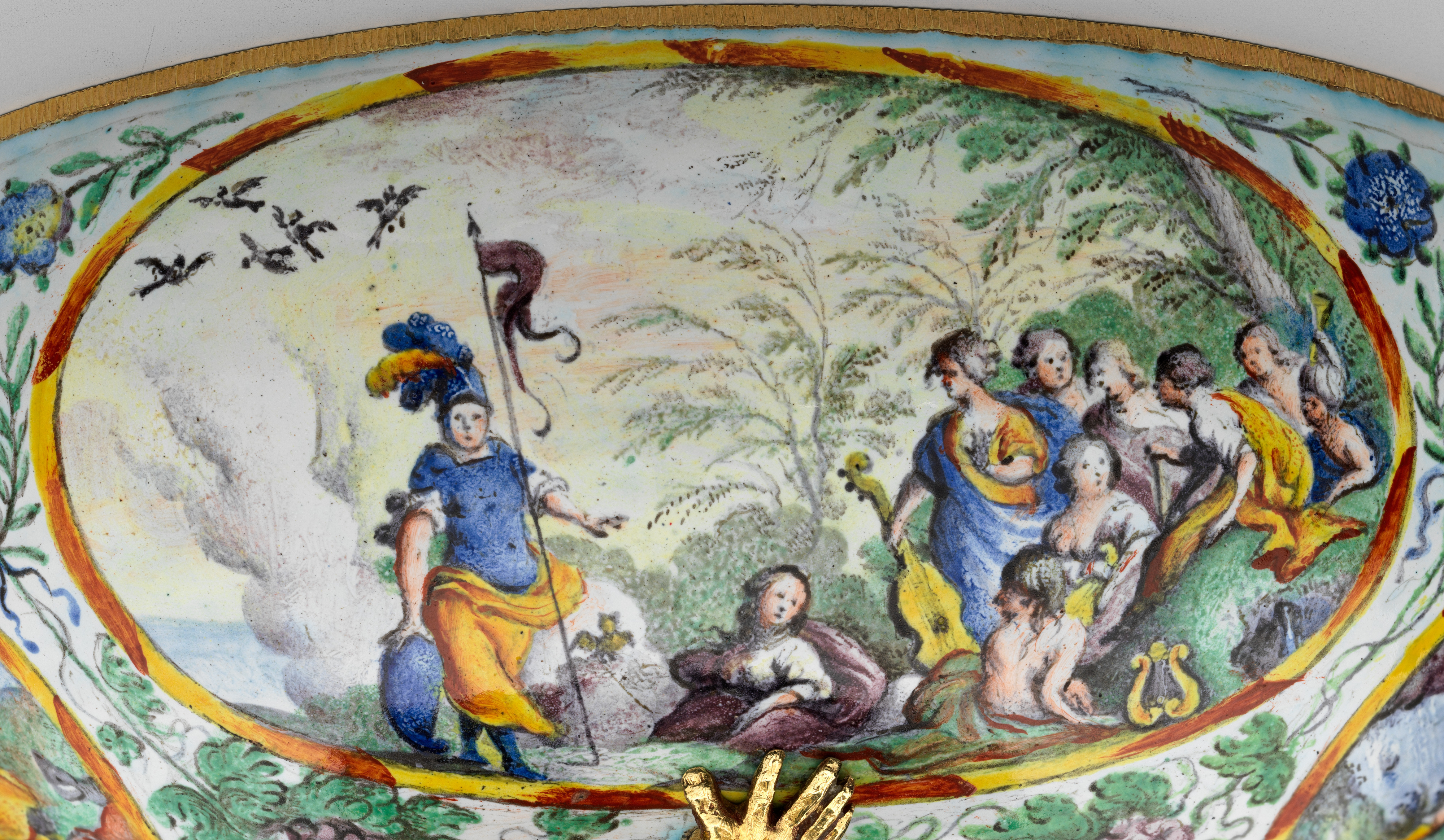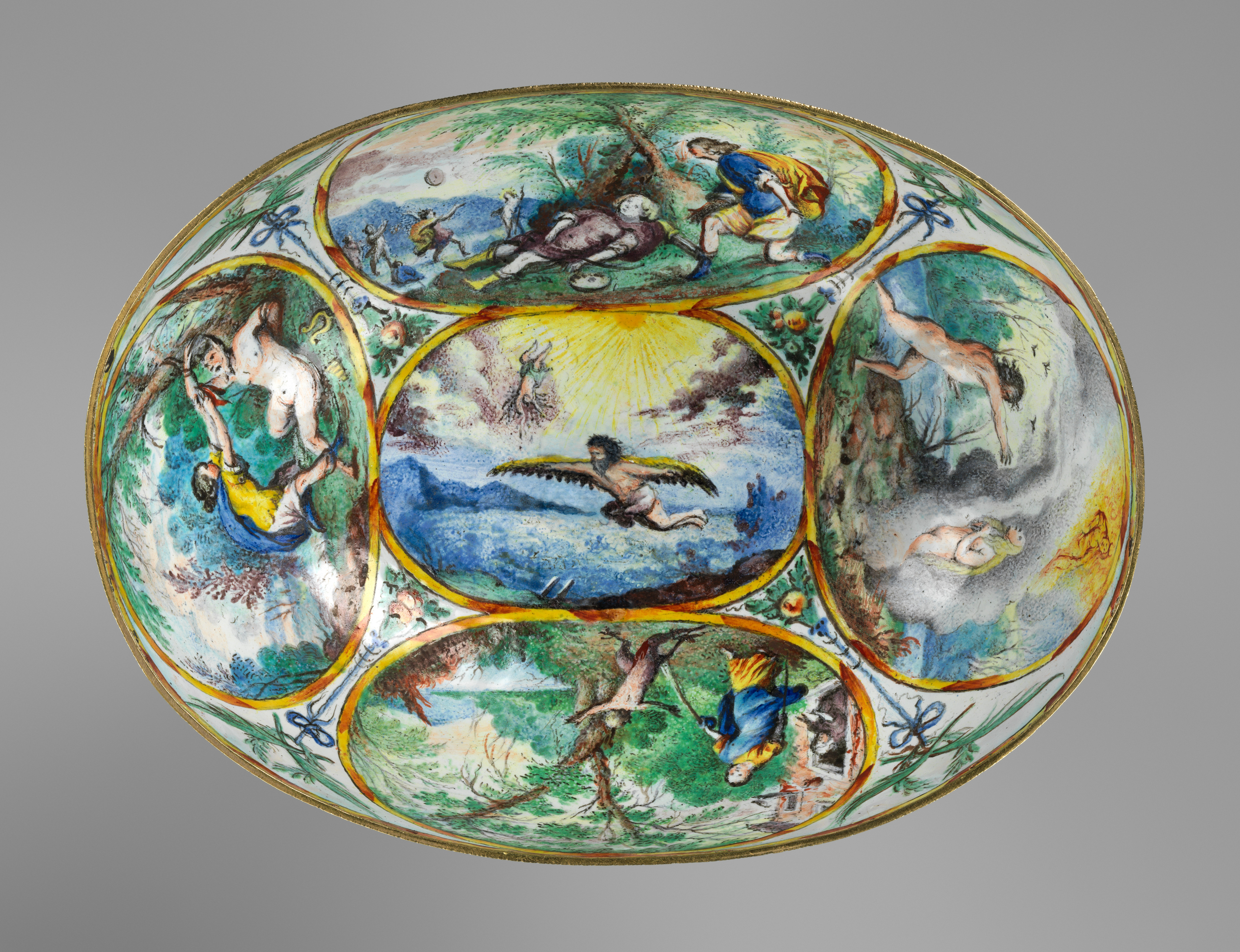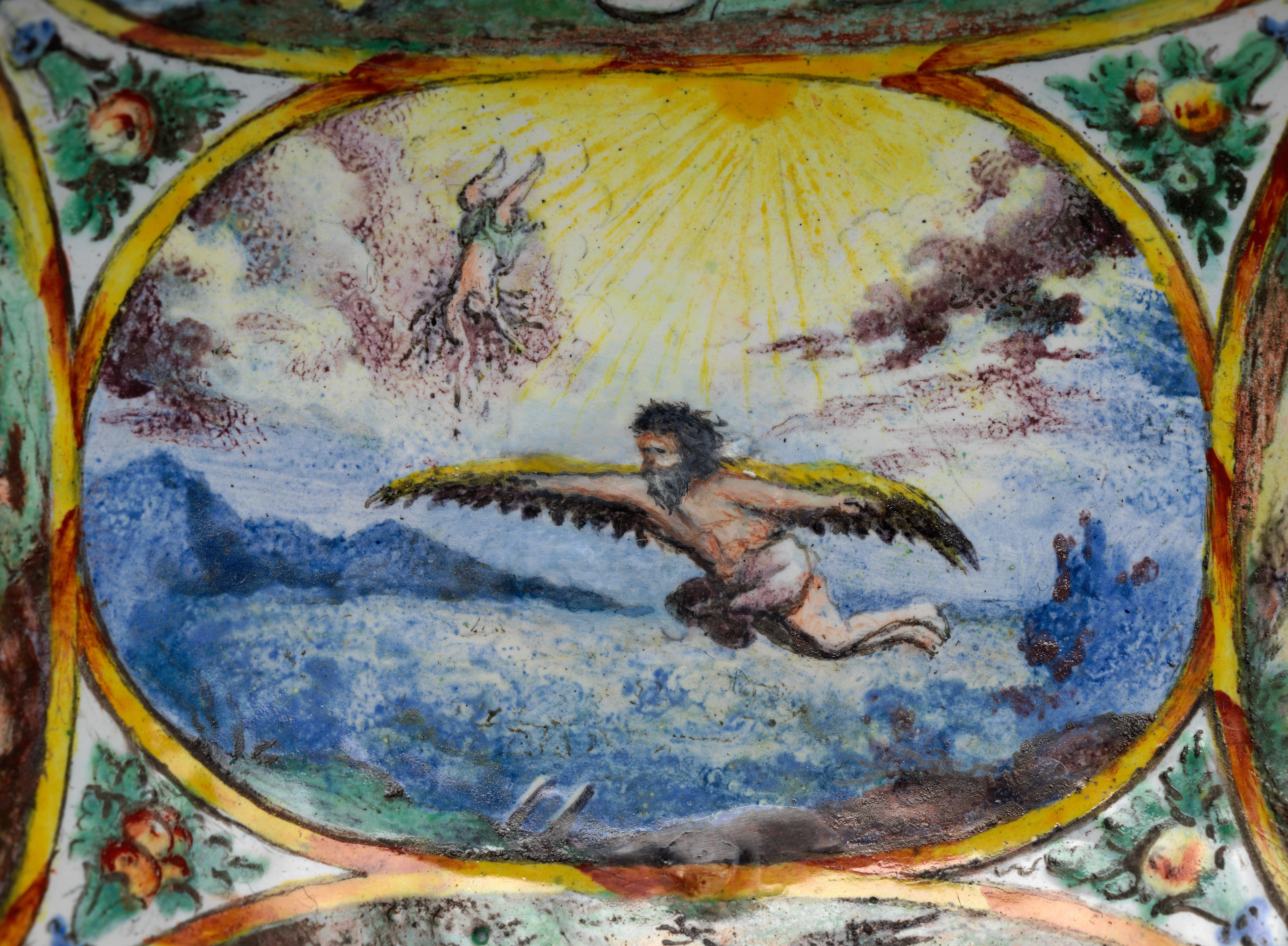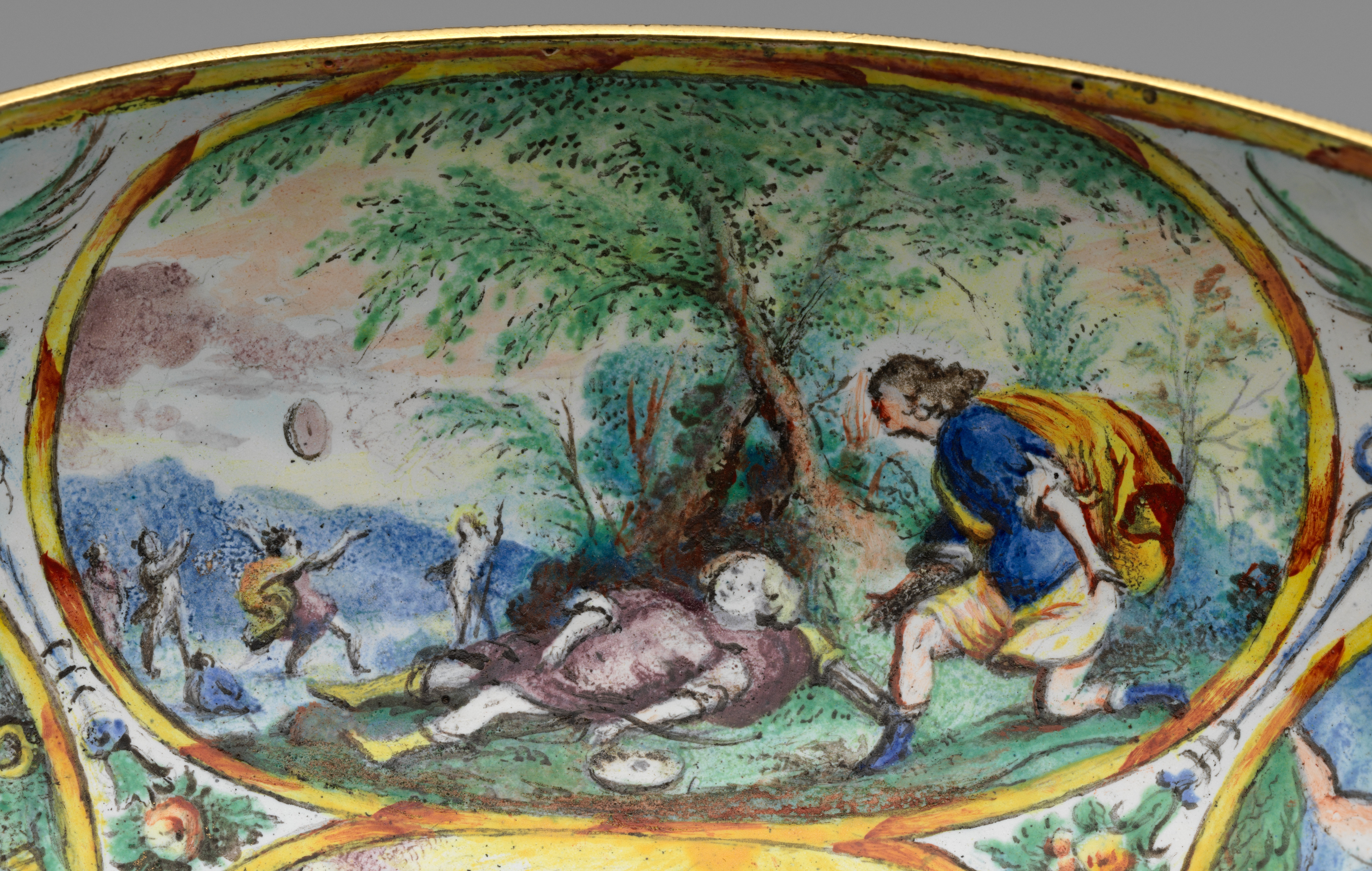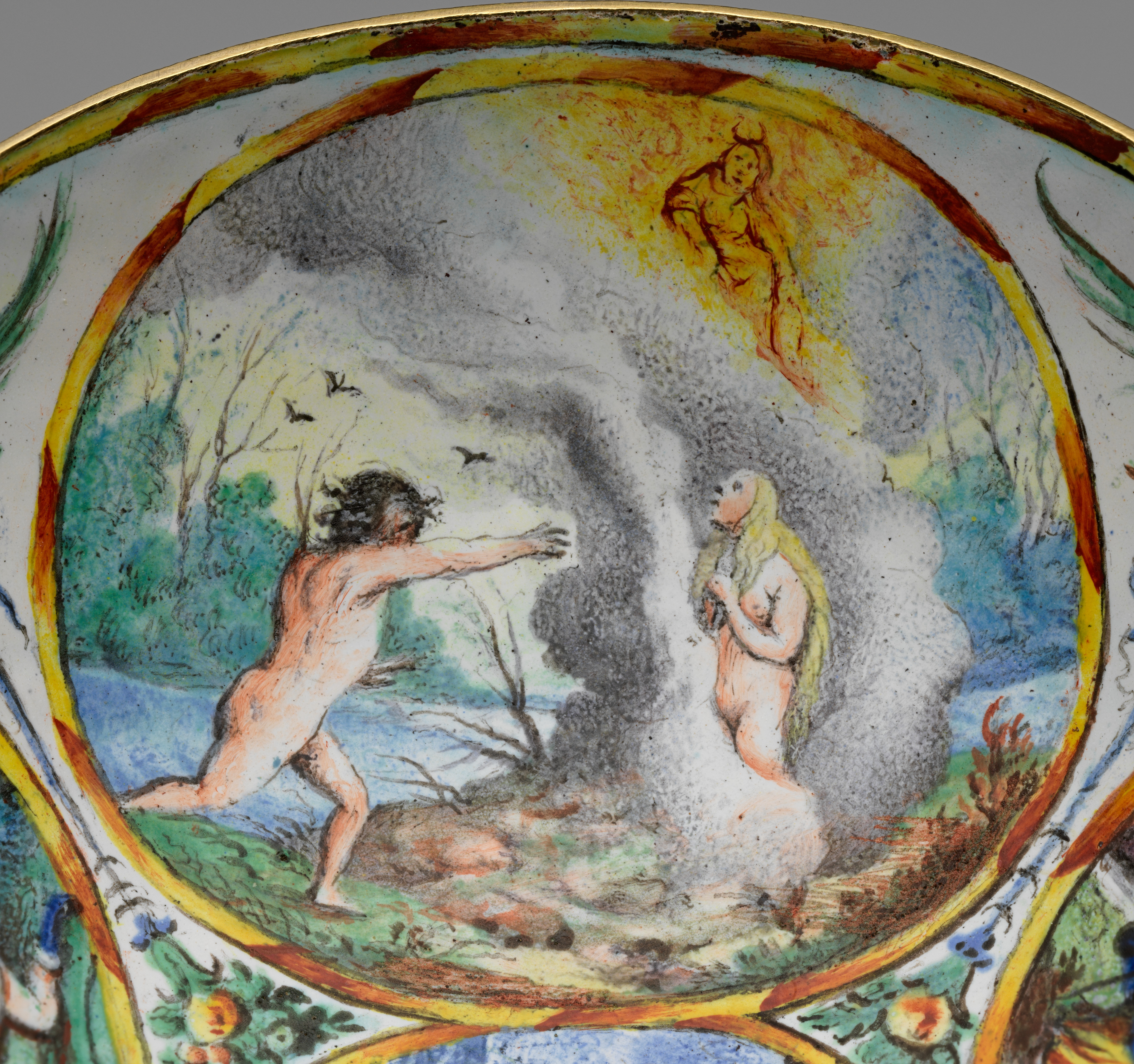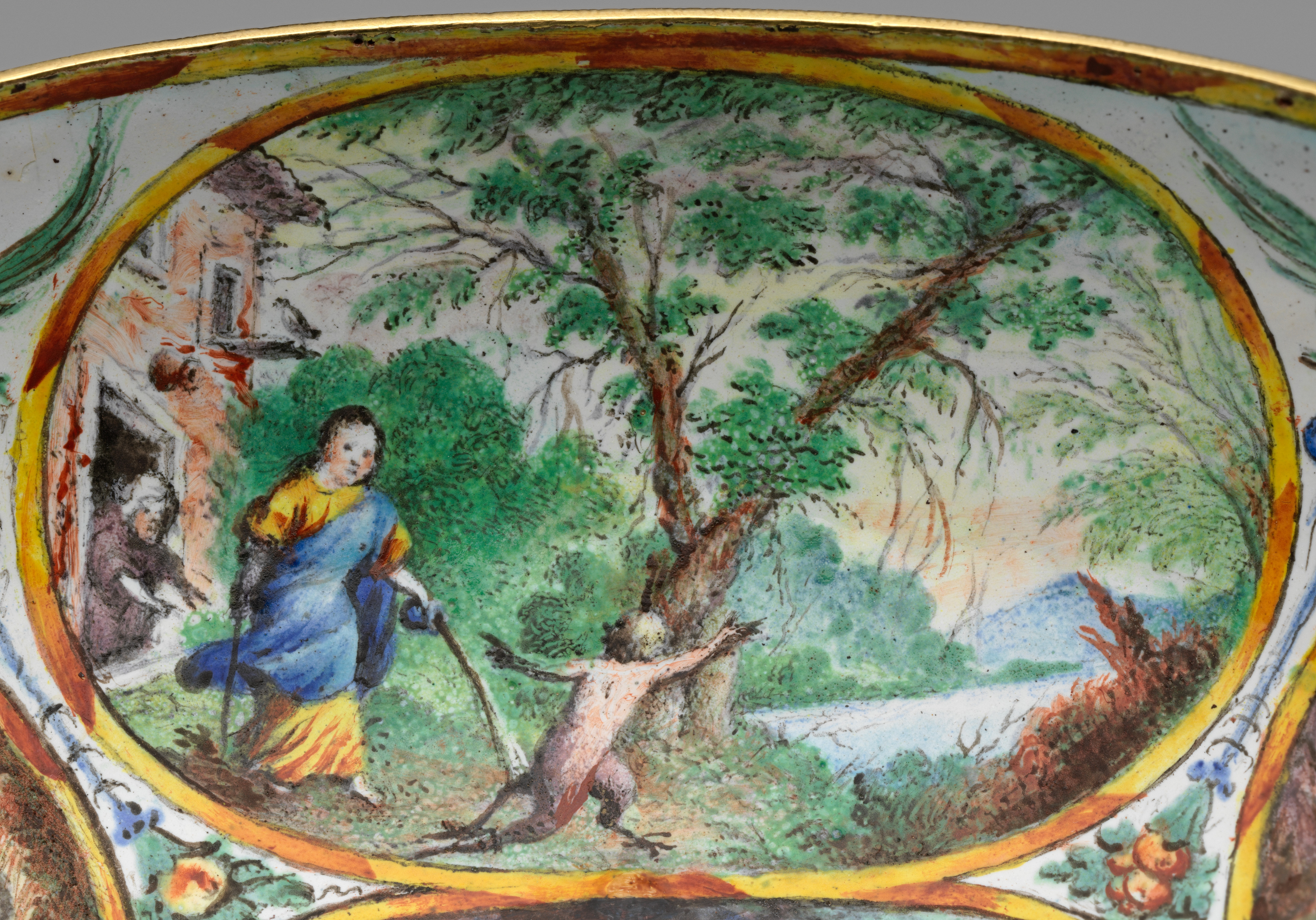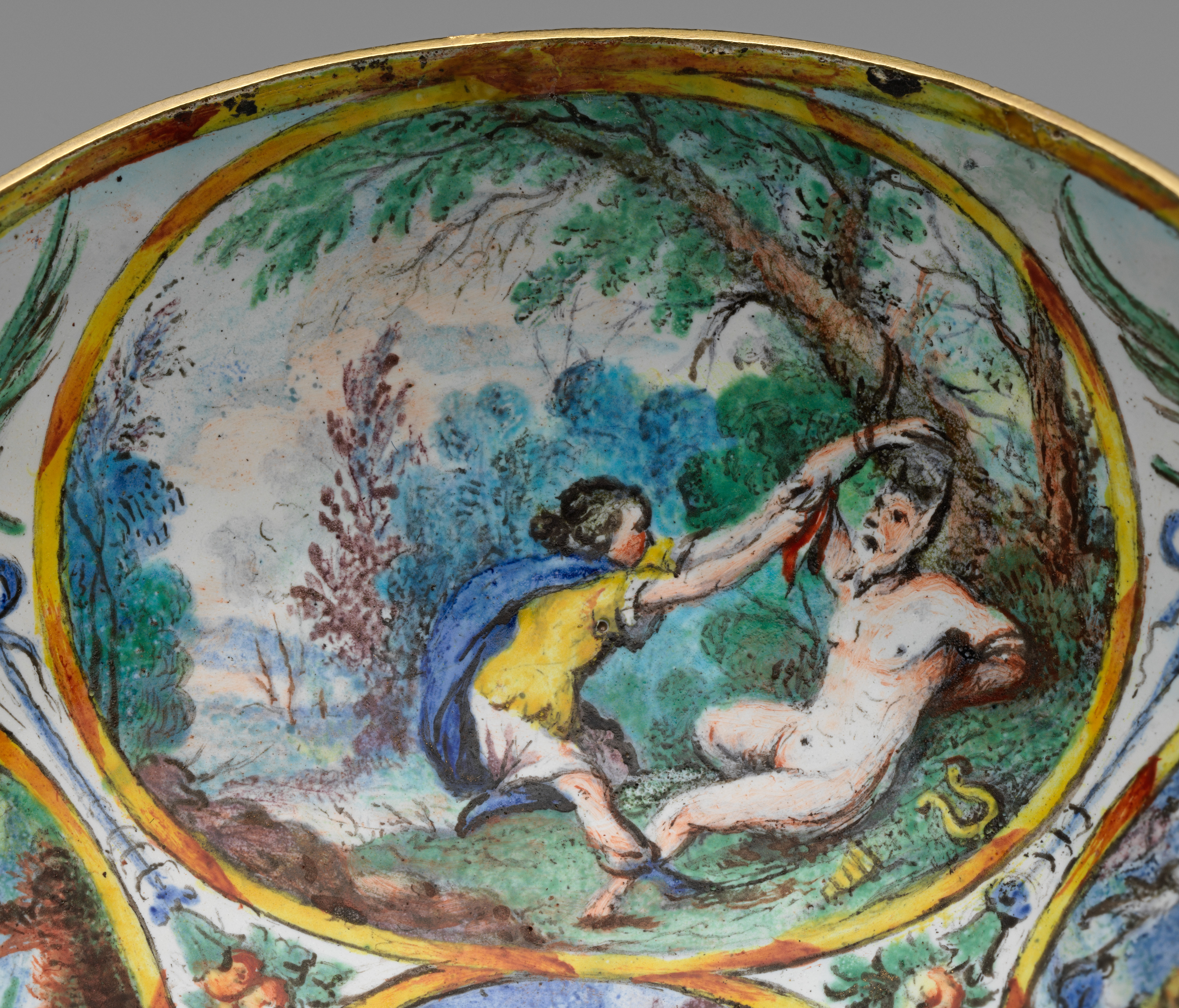The Orpheus Cup
The harmony of this cup’s complex iconographic composition, expressed in rubies and enameled gold, is the extraordinary achievement of four distinct hands working for the Imperial Courts in Prague and Vienna. The enameled animals and statuettes of Orpheus and Diana on the cover were made around 1600 in the Prague Imperial Workshop by Jan Vermeyen, Emperor Rudolf II’s favorite goldsmith. Forty years later, they were recovered from the Imperial Collection by the ingenious Hans Georg Bramer, goldsmith to Emperor Ferdinand III. Bramer designed the cup to cradle the precious figures perfectly, uniting them within a complex iconographic program of painted enamel ovals illustrating scenes from Ovid’s Metamorphoses; bringing only the best artisans together. The centrality of Orpheus to the cup’s design likely reflects the Emperor’s interest in music, as the legendary hero was known for the calming effect of his lyre, which brought peace even to the Argo’s violent crew. It may also reference Ferdinand III’s dynastic ambitions: ruler of the Holy Roman Empire at the end of the bloody Thirty Years War, he sought to leave a legacy of peace in his lands.
Due to rights restrictions, this image cannot be enlarged, viewed at full screen, or downloaded.
This artwork is meant to be viewed from right to left. Scroll left to view more.


